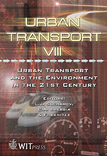Accessibility Indices And Planning Theory
Price
Free (open access)
Transaction
Volume
60
Pages
10
Published
2002
Size
641 kb
Paper DOI
10.2495/UT020041
Copyright
WIT Press
Author(s)
M.-C.Brodde Makrí
Abstract
Accessibility is an important factor in land-use planning and several methods have been developed to calculate and to predict it. Nevertheless, it is seldom applied in planning situations, maybe because many land-use planners and elected officials lack the knowledge and resources needed to use traffic models. Consequently, accessibility is often used as a concept and a goal in daily planning, but is seldom translated into operational forms. One way to bridge this gap is the introduction of accessibility indices for planning situations as an alternative. In this paper, a theoretical analysis is conducted in order to place accessibility in the theoretical context of urban and land-use planning. Main theories of urban and regional planning are analysed with focus on their explicit and implicit relations to accessibility. The aspects of planning theory that are dealt with are urban design, planning procedures, planning legislation and societal goals (i.e. equity and Sustainability). The indices discussed here are mainly integral place accessibility measures, containing a range of available opportunities with respect to their attractiveness and travel impedance. The applicability of the chosen indices has been evaluated quantitatively and qualitatively. The goal, by means of introducing accessibility indicators addressed to planners, architects, and elected officials, is to contribute to bridging the gap between the general discussions about accessibility in the planning context and the use of quantitative measures in accessibility models.
Keywords





